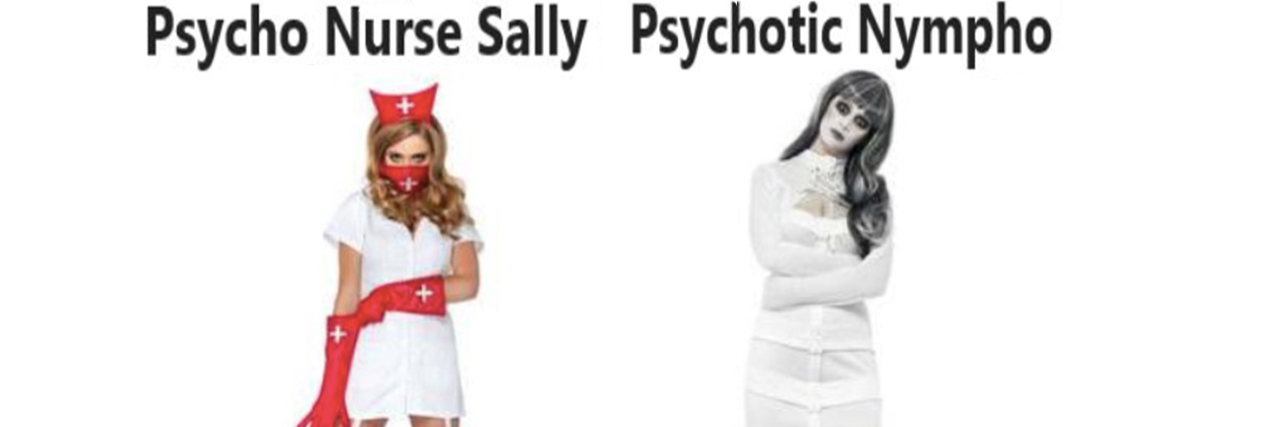One Company Said What Other Retailers Are Afraid to Admit About 'Psycho' Halloween Costumes
Sometimes the news isn’t as straightforward as it’s made to seem. Sarah Schuster, The Mighty’s mental health editor, explains what to keep in mind if you see this topic or similar stories in your newsfeed. This is The Mighty Takeaway.
It’s a story we’ve heard before, and frankly one I’m tired of:
- A company sells a product that’s offensive.
- The public is filled with rage.
- Media coverage spreads this rage.
- The company has the option to:
- Apologize and remove the product.
- Apologize, but keep the product.
- Say nothing, and wait for the rage to blow over.
We’ve seen it with products that make light of mental illness and we’ve seen it with products that spread harmful misinformation about mental illness. Every October, we see it as major retailers continue to stock “psycho,” “schizo” and “just-escaped-from-the-psych-ward” costumes.
Advocates have been pointing out how inappropriate and stigmatizing it is to sell scary, mental illness-inspired Halloween costumes for years, and yet stores continue to sell them.
Well this year, in the midst of another “product outrage story,” one retailer finally admitted what other stores and online merchants are probably thinking: “It’s exactly the same as selling a clown costume. There are people who are terrified of clowns and people who are scared of mentally ill people.”
There are “people who are scared of mentally ill people.”
Yes. That’s the quote.
The retailer is a UK-based company called Escapade, and the quote is from an unnamed spokesperson who was being interviewed by BuzzFeed News about his/her company selling costumes such as Psycho Teddy Bear, Cell Block Psycho and Psycho Nurse Sally.
This year's Halloween has far fewer offensive costumes but @Escapade_UK bucks the trend with not 1 but 2 of them. pic.twitter.com/hlAx2ipU1b
— Dr Tony Rao (@oldagepsych) October 11, 2017
Since the Buzzfeed report, the word “psycho” has been taken out of a few costume descriptions.
And while I guess it’s a win that there are less “psycho” options for those looking to be a “psycho” for Halloween (although I would suggest you chose a different outfit), what’s really amazing about this story is that instead of dodging the question or saying something safe, the spokesperson from Escapade actually gave an honest explanation.
It’s exactly the same as selling a clown costume. There are people who are terrified of clowns and people who are scared of mentally ill people.
I believe this roughly translates to: people keep buying it, so we’ll keep selling it.
And honestly, I appreciate this answer. Because when we target offensive Halloween costumes, we sometimes forget the costumes themselves aren’t necessarily the problem, but rather a symptom of an even larger, more deeply rooted one: people are really afraid of those who live with mental illnesses.
The “crazy” killer has been a horror movie trope for decades, from Hitchcock’s aptly named “Psycho,” to the killer who escapes from an asylum in “Halloween” to the more recent example of “Split,” a movie about a dangerous man with dissociative identity disorder.
The scary, killer “mentally ill” person isn’t just confined to fiction. A study that looked at trends in media coverage from 1995 to 2014, took a random sample of 400 news stories about mental illness and found that 55 percent were about violence. An unfair representation, considering that people who live with mental illnesses are more likely to be victims of violence than violent themselves.
Rather than treating people with mental illnesses as scary, let’s look at the real culprit: the horrifying history of how we’ve treated people in the mental health system.
From the late 1880s to the 1960s, people sent to mental institutions lived in deplorable conditions, and “treatments” like forced lobotomies (first performed in 1935) and electroconvulsive therapy (ECT) (developed in 1938) were used liberally, leaving some patients with lasting damage. By the late 1950s, an estimated 50,000 lobotomies were performed in the United States. These large state institutions were isolated from the rest of society, segregating those with mental illnesses and feeding the myth of what “kind of people” were locked away.
When these large state institutions finally began to shut down in 1955, we failed to provide adequate replacement services that would actually help people. Sure, there are psychiatric and treatment centers now that are nothing like the “scary” institutions of the past, but there are still gaps — and abuses — in our mental health treatment system today.
It’s these gaps and abuses that are scary. People are still treated like criminals when they are suicidal, people with mental illnesses are mistreated in jails and people with mental illnesses still can’t afford the health care they might need. Of the 2,300 inmates in one Indiana county, an estimated 40 percent live with a mental illness. In January 2016, one in five people experiencing homelessness had a serious mental illness. According the the National Alliance of Mental Illness, only 41 percent of adults in the U.S. with a mental health condition received mental health services in the past year.
People with mental illnesses are real, and they are not your Halloween costumes. And although we should be fighting against the stigma these costumes spread, in the midst of “product rage,” please don’t forget to face something scarier — the real-life injustices people within the mental health system face.

